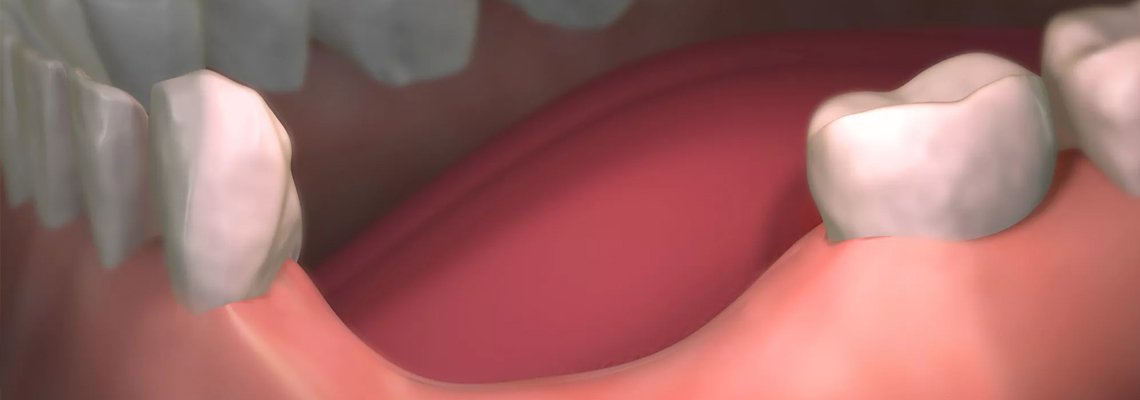Ways to Prevent Bone Loss after Tooth Extraction

Most people don’t know that when they lose a tooth, they also lose the bone that was around that tooth. Few people think about it when they have a tooth pulled. When you lose a tooth, the jawbone that used to hold it starts to get smaller. First, the width shrinks, and then the height starts to get shorter. This article will help you understand why it happens, why it’s important, and what you can do about it.
What Causes Bone Loss after Tooth Extraction?
The alveolar bone, which is the bone around the teeth, has only one job: to hold and support the teeth. You may have heard that gum disease can lead to bone loss (periodontal disease). This happens when toxins from bacteria in plaque buildup kill the bone around a tooth while the tooth is still in place. After a tooth is pulled, the bone just shrinks because it doesn’t have a tooth to surround it anymore.
The bone loss happens because that area of bone isn’t being used to chew. When a tooth touches another tooth while biting or chewing, the force goes down the roots and into the bone around it. This tells tiny cells that make bones get to work. Without the force of chewing, these cells can’t work, and the bone slowly breaks down.
Why does Bone Loss after Tooth Extraction Matter?
When you lose bone where a tooth used to be, there are a few things that could go wrong. When several teeth are missing in a row, the risks go up.
It makes the gums and bone around neighboring teeth recede: When a tooth is missing, the gums and bone on the side of the tooth facing the empty space usually recede. Over time, this loss of support makes it harder for these teeth to stay healthy.
It makes the bone weaker and makes it more likely that the jaw will break: When a lot of teeth are missing all at once, the jawbone gets thin and short. In general, it gets a lot weaker. If you were to fall or get hurt in the face, you would be much more likely to break that part of your jawbone.
It could stop a dental implant from being used to replace that tooth in the future: A tooth extraction is something that many people need to do, and sometimes they need to do it quickly. This means that they might not plan to replace the tooth right away with a dental implant, putting it off until a long time from now. It is possible for the bone around a missing tooth to shrink so much that there is no longer enough bone to support a dental implant.
Most of the time, your doctor can add more bone to the area with a type of surgery called bone grafting. This may give the bone enough width and height to hold an implant. Of course, as with most things, it is much easier and cheaper to stop bone loss than to try to build it back up.
How Can you Slow Down Bone Loss after Tooth Extraction?
When your dentist pulls a tooth, she will talk to you about a “socket preservation graft” if you want to replace it with an implant in the future. This is a very simple type of bone graft in which material is put right into the spot where the tooth was taken out. By filling in the hole left by extraction and giving new bone something to grow on, you can slow down the process of bone loss.
In this case, we say “slow down” instead of “stop” because you could still lose bone over time.
How Do you Prevent Bone Loss after Tooth Extraction?
To keep bone loss from happening after a tooth is pulled, you should get a replacement tooth as soon as possible. To be more specific, you need a dental implant to replace the root of the missing tooth as soon as possible.
There is nothing wrong with getting a bridge or a removable partial instead of a dental implant to replace a tooth. They don’t replace the tooth’s root, so they don’t stop bone loss over time. Patients with removable appliances like partials and dentures will notice this the most. Over time, as the bone shrinks and a small space forms between the denture and the gums, it’s easy for them to see the changes. This causes pain, rubbing, looseness, and trouble chewing.
An implant is a way to stop this from happening. The only way to replace a missing tooth that anchors into the bone and gives the bone a new purpose is with an implant.
More Questions about Bone Loss or Missing Tooth Replacement?
Call the Dr. Motiwala Dental Clinic & Implant Center right now to set up an appointment with Dr. Motiwala. He can answer all your questions, figure out what’s going on, and help you decide what the best next step is.
Dr. Motiwala in International Press
To access the article, kindly click the logo of the NEWS website below.
 |
 |
 |
Don’t Wait, Contact Us Now!
Dial +91 99596 14584 to speak with Dr. Motiwala Dental Clinic & Implant Center about your treatment choices and avoid paying any sinus lift costs in India. Contact us using the form on our CONTACT US page, and we’ll get back to you as soon as we can with the information you require.


